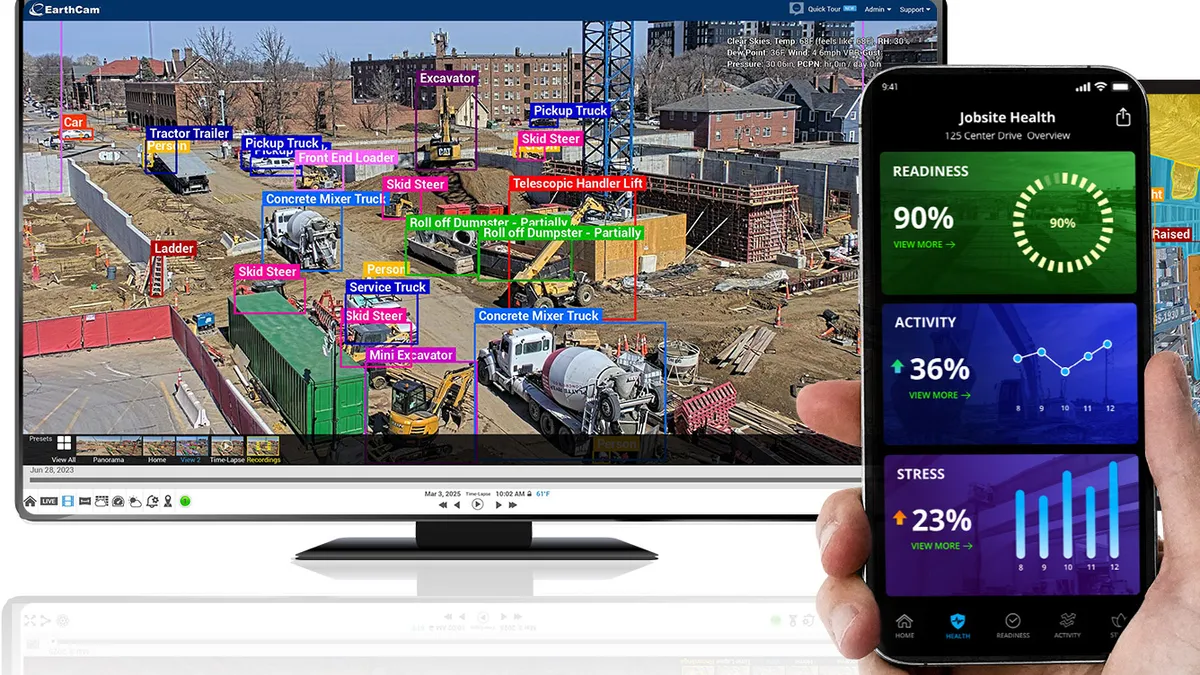Richard Friedman is founder and president of Friedman & Partners, a Wayland, Massachusetts-based consulting firm for the architecture, engineering and construction industries. Opinions are the author’s own.
Few issues have dominated national news the way that artificial intelligence has in 2023.
The watershed moment was the release of ChatGPT, a transformative word processing tool that uses AI to quickly answer questions posed to it. Almost immediately, people and businesses found myriad ways to use the tool to save time when developing written content and performing other tasks.
In this article, I will take a look at how some AEC firms are using AI, and what you should do — and shouldn’t do — to make it work for your firm.

Business development and marketing are the areas most expected to benefit from the use of AI. While many firms are still in the investigation and discussion phase of figuring out how ChatGPT and other artificial intelligence-based programs can benefit these efforts, some firms are putting them into practice in the following ways:
Go/no-go process: A few firms are experimenting with the use of AI to help inform the go/no-go process. Akshay Mahajan, executive vice president of AEC for Unanet, one of my clients, finds that AI can provide valuable, in-depth and objective insight into whether a project pursuit is likely to bear fruit.
“In the go/no-go process, people look at the data available to them,” said Mahajan. “Who is the client? Are they a repeat client? What’s the dollar value? Where is the project? Then everybody is supposed use their own data and imagination – what does it mean to you, what does the current pipeline look like, are we already overrun in this sector and what is our experience with this client or type of project?”
Some of the programs that might help in this type of endeavor include Vertex AI, Model Garden, Generative AI Studio and Duet AI from Google Cloud. MathWorks has a machine learning tool called MATLAB that analyzes and models data. OpenAI, which created ChatGPT, also has other tools like DALL-E, which draws images based on what you tell it to do.
The firm usually then puts all this objective and subjective information into a form to produce a number or percentage that indicates whether the firm should go or not.
Mahajan said that generative AI offers firms the ability to bring far more relevant data into the process and deliver a stronger direction, not only about whether to pursue a project, but also how some changes might improve the firm’s chances of a win.
“You can take the past and current data, then add the pursuit data, and input it into a machine-learning algorithm and get an output as simple as your percentage chance of winning,” adds Mahajan. “But then you could get a second output that tells you what your margins are going to be if you win it, based on historical data. This is very difficult to calculate with the data we typically have.”
Mahajan continues on to say that a firm can also determine if winning a project helps move the strategic plan forward.
“So even if your chances of winning are lower than you typically like, you may want to pursue it if it serves the purpose of the strategic plan. AI can also tell you how you can increase your chances of winning – for example, maybe it can give you three more contacts within the target company for you to meet, or some insight into pricing.”
As is usually the case, the better data available to the AI program, the more helpful the result. Firms with a robust, detailed CRM system that has a substantial amount of information about past pursuits will get better insight from this type of process.
Proposal development: Firms are using AI to generate boilerplate language for competitive proposals. The caution is to ensure that it doesn’t become obvious to the recipient that it is boilerplate generated by a machine. Done correctly, however, content created by AI and edited by a human will more efficiently populate the more mundane parts of a proposal.
Brainstorming: Firms are using AI to prime the pump for ideas to use in content marketing programs, website content, client outreach and even project design. Stumped on what to say? Ask AI, and then filter and refine the results to articulate your message.
Scheduling: Mahajan said that project managers can benefit from using AI to help them prioritize their day.
“One of the biggest challenges that seller-doers have is context switching every 30 minutes. Sometimes they struggle with understanding if they’re working on what they should be at the time. AI and machine learning can help by telling them what will happen if they don’t act. Maybe it can say that a phase of a project will be delayed if you don’t act on something, for example.”
Value engineering: Mike Boisvert, senior consultant and data acquisition manager for 850-person environmental consulting firm Verdantas, sees the potential for AI to quickly determine the best approach to enhance jobsite performance.
“Let’s say we’re designing earthworks for a shipping facility, and we have a set amount of material,” said Boisvert. “AI may help minimize cuts and fills, identify where material should be stored for best functionality or improve the flow of truck traffic. Clients aren’t paying consultants for options or time; they’re paying you to save them money in design. So AI might provide 15 options to decide from instead of two or three.”
Reports and data analysis: AI can usually spot trends and patterns, summarize data and produce content faster than humans can. This can result in more comprehensive, detailed deliverables rich with relevant information that would be cost prohibitive for a human to do without the help of AI.
Social media marketing: AEC firms of all types and sizes are generating content for LinkedIn and other social media outlets using ChatGPT.
The process typically involves asking the chatbot a question; for example — “What is the outlook for architecture firms that work in the healthcare market?" — then reviewing and editing the content it generates before posting it as a thought leadership piece on LinkedIn, a blog or some other form of social media. Thus, a process that might take an hour or two without AI can happen in minutes.
ChatGPT answered the question posed above with an introductory line — “Architecture firms that specialize in Healthcare can have a positive outlook due to several factors:” — and then delivered six numbered paragraphs that included references to patient-centered care and sustainable design.
The content was vanilla, suggesting that a more targeted or provocative question would produce a better result, and that editing the content to add back some “humanity” is imperative. Also, when using ChatGPT, keep in mind that you can follow up your original question or statement to produce increasingly more detailed results.
Handle with care
The lightning-fast emergence of AI has made it a bit of a free-for-all, especially as ChatGPT has emerged as a free and ubiquitous AI tool.
Employees may be using this chat bot program or other forms of AI without the knowledge or approval of company leaders and IT managers. This is one reason that Verdantas put a temporary hold on all AI use for deliverables.
“We’re establishing some guidelines within the company about the use of ChatGPT and other AI language systems,” said Boisvert. “The current guideline is that no deliverables will be done with AI systems until we establish a vetting process. We want to create a task force to get a better understanding of what the system does before any published documents go out.”
He adds: “We’re taking the stance to not push this as a deliverable mechanism because we have no way of proofing where this information came from. Are there risks with submitting documents that might have proprietary or copyright information behind them? Where did the information truly come from? What facts are there? It's pulling all the information from various sources, so how do you properly source and document? It’s a concern.”
This doesn’t mean that Boisvert is down on the idea of AI contributing in the near future.
“We want to use the technology,” he said. “We want to engage Verdantas’ employees to innovate and keep moving forward because we know that if we’re not innovating and creating uses for AI, we’re going to be behind.”



















